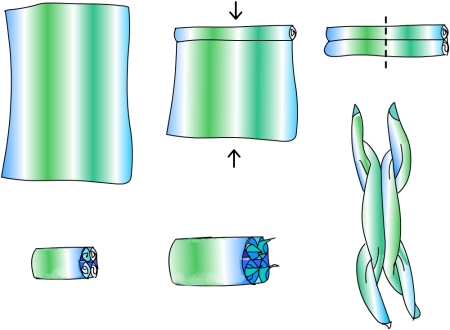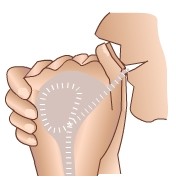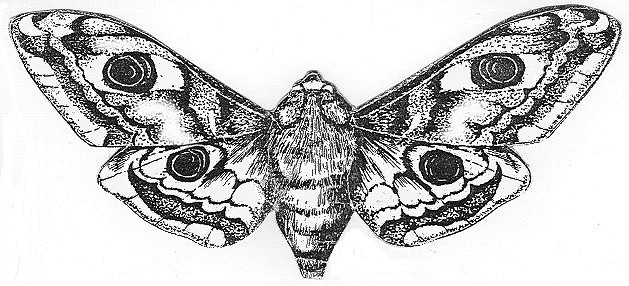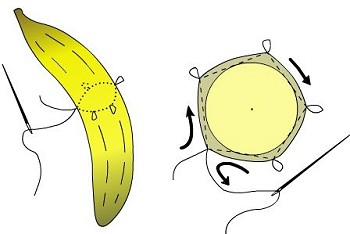This looks complicated, but its not – its just long-winded to explain.
For this trick you need a man’s handkerchief or a square cloth of a similar size. Smooth it out flat (on a table) as in the diagram below, and then fold it upwards diagonally in half. Fold the corners in from each side so that the points meet in the middle at the bottom. From the bottom edge, roll the handkerchief upwards, but stop before you get to the top, so that the top corners peep out as a small triangle of cloth:
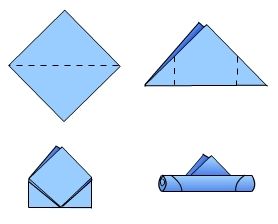
Turn your hand palm-side up and rest your fingers on the roll of handkerchief just below the triangle. Fold the triangle down over the tips of your fingers, and, keeping that in place, fold first the left side of the handkerchief roll across over your fingers and then the right side. Hold it firmly with your thumb:
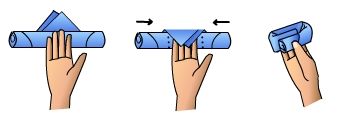
Now put the fingers of your other hand back-to-back with the fingers holding the handkerchief, slipping them up into the back of the handkerchief roll. The thumb of that hand will naturally rest on top of the handkerchief. Push your thumbs away from you, pushing down into the middle of the handkerchief roll, and almost turning it inside-out as your hands start to turn over. This will start an action of rolling each side of the roll in towards the middle. As you keep doing this, the material on the left side will gradually wind onto the right-hand side, and two ends of handkerchief will shake out, so that the handkerchief now looks like a weird Christmas cracker. One end is the mouse’s tail, but the other one has a knot tied in it to make the head.
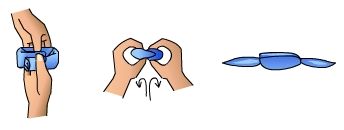
To make the knot pull the edges of one of the tails out gently sideways, and then fold the point back towards the body, making a triangle. The two points of the triangle that stick out can then be used as the ends when you make a simple hand-over knot, twisting one end over the other and back through the hole. Pull the knot tight to make the head, with the ends becoming the mouse ears.

Now to make it jump! Place the mouse in your cupped hand, with its head looking up your arm, and your fingers curled gently and tucked under its bum:

These fingers can now act like a spring, pushing the mouse forward suddenly whenever you want. Put your other hand over the top and pet the mouse to hide the action. You can make the mouse look restless and if its trying to escape out of your hands if you make the action light, or make it jump out of your hands by giving it a good push. You can aim it up your arm, and then make it look as if its running right up to your shoulder by lightly using your right hand to very quickly and repeatedly pick up and drop the mouse as you push it up your arm. If this is done well it is very realistic!Its fun to make the mouse restless and ‘naughty’, and then give it to someone else to pet and see if they can make it settle down. Of course its docile and ‘good’ for them, but when they give it back to you to stroke, it immediately misbehaves, jumping out of your hand and up your arm into our hair!
